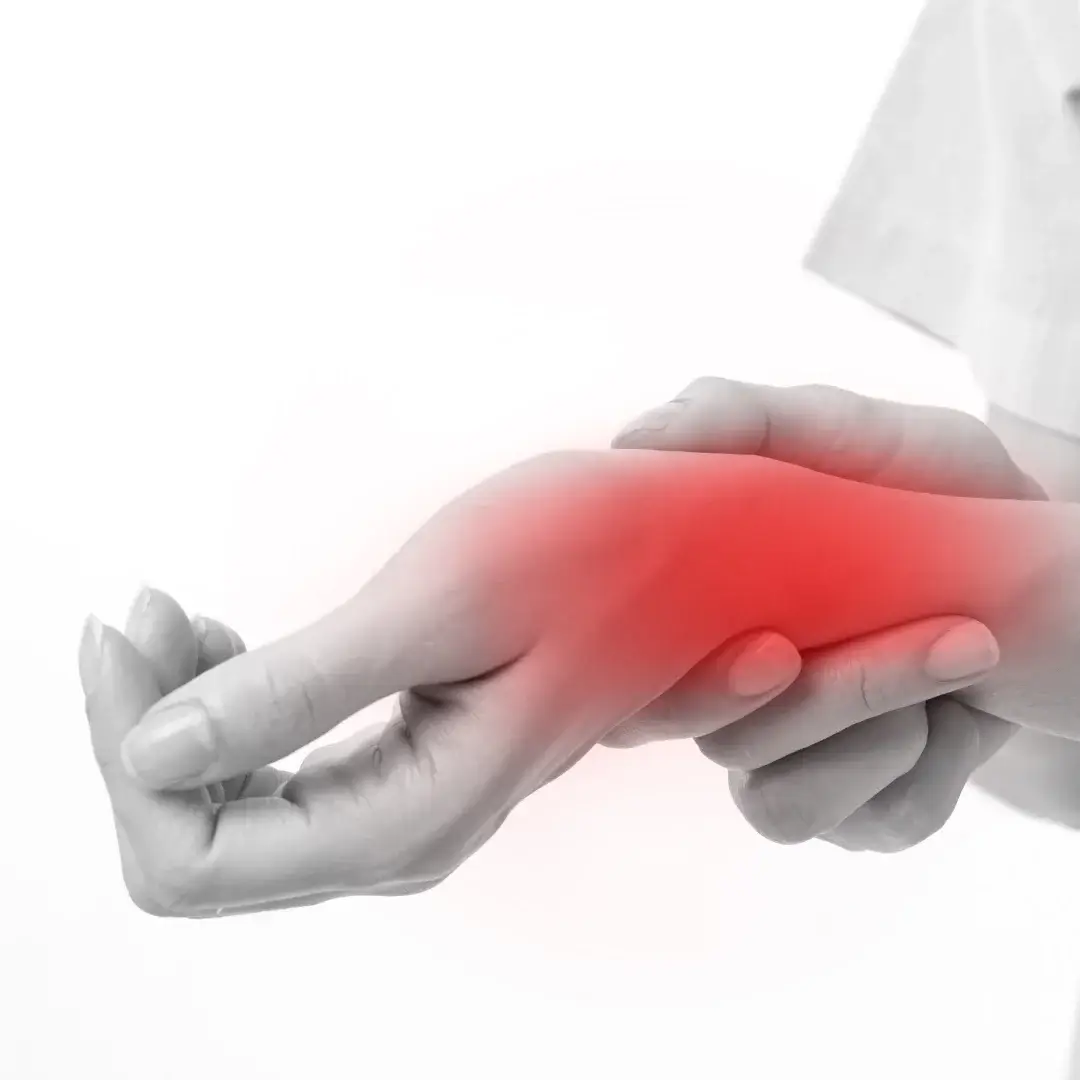Overview:
A wrist sprain is a common injury that occurs when the ligaments connecting the bones within the wrist joint are stretched or torn due to sudden force or excessive bending of the wrist. This can result in pain, swelling, and limited wrist mobility, affecting daily activities and hand function.
Anatomy:
The wrist joint is a complex structure comprising various bones, ligaments, and tendons that enable flexible movement and stability. Ligaments are strong bands of tissue that connect bones to each other, providing support and maintaining joint integrity. In a wrist sprain, the ligaments around the wrist, particularly those on the palm side (volar) or back side (dorsal), are typically affected.
Causes:
Wrist sprains commonly occur due to:
- Fall onto an Outstretched Hand: Landing on an outstretched hand during a fall can place significant stress on the wrist ligaments, leading to sprain injuries.
- Sudden Impact or Trauma: Direct impact or trauma to the wrist, such as during sports activities, accidents, or motor vehicle collisions, can cause ligamentous injuries and sprains.
- Repetitive Stress: Repetitive wrist movements or activities that involve forceful bending or twisting of the wrist, such as lifting heavy objects or participating in sports with repetitive motions, may contribute to chronic wrist sprains over time.
Symptoms:
Signs and symptoms of a wrist sprain may include:
- Pain: Sharp or dull pain around the wrist joint, which may worsen with movement or pressure.
- Swelling: Inflammation and swelling around the wrist area, accompanied by warmth and redness.
- Bruising: Discoloration or bruising may develop over the affected wrist due to internal bleeding from torn blood vessels.
- Limited Range of Motion: Difficulty moving the wrist joint fully, particularly with bending or rotating movements.
- Weakness: Reduced grip strength or weakness in the hand and wrist, making it challenging to perform everyday tasks.
Diagnosis:
Diagnosis of a wrist sprain typically involves a thorough evaluation of symptoms, medical history, and physical examination by a healthcare professional. Diagnostic tests, such as X-rays or MRI scans, may be ordered to rule out fractures or assess the extent of soft tissue damage.
Treatment:
Treatment for a wrist sprain aims to alleviate pain, reduce swelling, promote healing, and restore wrist function:
- Rest and Immobilization: Immobilising the wrist with a splint or brace and avoiding activities that exacerbate pain can facilitate the healing process and prevent further injury.
- Ice Therapy: Applying ice packs to the injured wrist for 15-20 minutes every few hours can help reduce pain and swelling.
- Compression: Wrapping the wrist with an elastic bandage or compression wrap can minimise swelling and provide support to the injured area.
- Elevation: Elevating the wrist above heart level, especially during rest or sleep, can reduce swelling and promote fluid drainage.
- Pain Management: Over-the-counter pain relievers, such as acetaminophen or nonsteroidal anti-inflammatory drugs (NSAIDs), may be used to alleviate pain and discomfort.
- Physical Therapy: Gentle stretching and strengthening exercises prescribed by a physical therapist can improve wrist flexibility, stability, and range of motion.
- Gradual Return to Activity: Gradually reintroducing activities and exercises once the pain and swelling have subsided can help rebuild wrist strength and function while minimising the risk of reinjury.
Outlook/Prognosis:
The prognosis for a wrist sprain depends on the severity of the injury, promptness of treatment, and adherence to rehabilitation protocols. Most mild to moderate wrist sprains heal within a few weeks with conservative management, while severe sprains or those associated with ligament tears may require longer recovery times and possibly surgical intervention. Early intervention, proper immobilisation, and guided rehabilitation are crucial for optimal recovery and restoration of wrist function. If symptoms persist or worsen despite conservative measures, further evaluation by a healthcare provider may be necessary to explore additional treatment options.

